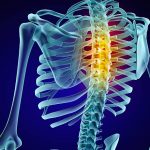
Bone Deterioration
Bones are active and living tissue. They respond to stresses by creating augmented lines of strength. However, when stress is constant or too severe, the forces transforming bone skew in favor of the bone being broken down faster than being rebuilt. This process causes degeneration and pain of the bone in arthritic regions, a process that is detrimental to the bone, structure, and to cartilage as one of the sources of nutrition for cartilage comes from its contact with the bone on which it resides. Think of the phrase “building on a sandy foundation” when considering the effects this process has on the integrity of the bone, cartilage, and the entire articulation. Only particular types of images on MRI will show this deterioration. Recognizing the effects of this type of degeneration and having the skills and ability to treat it is a crucial part of the equation for overall procedural planning.
Sometimes, fractures in bone are unable to heal, usually, because the nerve or blood supply is inadequate or injured. When this occurs time, patience, bone stimulators and differential loading are sometimes tried. If these are unsuccessful, surgery to fuse the fracture back together sometimes needs to be completed to stabilize the bone. Dr. Hanson is one of the few physicians with experience using bone acquired from the patient and healing cell concentrates to help the body heal these areas.
A variation of a fracture with nerve and blood supply issues affecting healing is one where only the nerve or blood supply are affected leading to a condition called osteonecrosis (literally bone death). This most commonly happens in the ball side of the hip joint. The most common agents used to treat bone deterioration are Platelet-Rich Plasma Therapy and Bone Marrow Cellular Concentrate. On average, a patient seeking treatment for bone deterioration will receive 1-3 injections over a three to six month period. This will provide relief for two or more years depending on the severity of the deterioration at the beginning of treatment and the type of regenerative treatment used.
